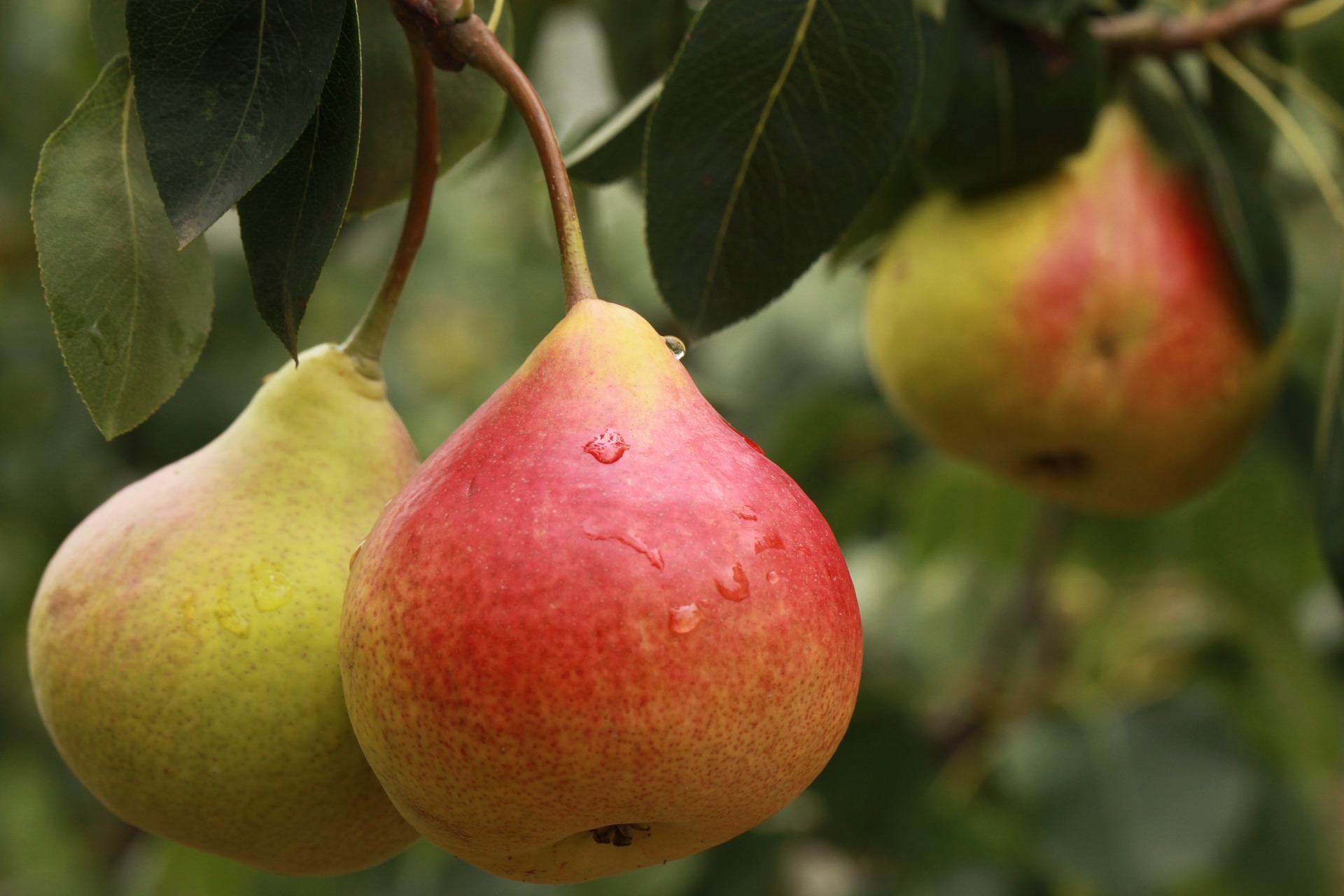Pear pruning is different from apple pruning. Compared to the apple, the pear is characterized by narrower branching angles and more upright growth of the saplings, so it needs to be bent more, especially in the first years after planting, in order to shape the crown in accordance with the desired growing form.
Pear activates a larger number of buds, so the average length of shoots is shorter. This difference can also be observed among the varieties, which are divided into three groups accordingly. Krasanka, Kleržo and Drustvenka belong to the first group, which produces a large number of buds and has shorter shoots. Viljamovka, Klap’s favorite, belongs to the group with moderate budding and a slightly longer average shoot length, while the Boskova squash variety pushes the lowest number of buds. Pear responds well to early tip isolation in order to achieve better branching and wider branching angles.


For pruning, it is necessary to know the way of growth of individual varieties. According to the type of shoots on which they produce the majority of nature, pear varieties are divided into three main groups.
Varieties that give birth on spikes located on two-year-old branches – Viljamovka, Pastorčica, Rana Morettinijeva, Trevuška, Klap’s pet, Fetelova have this type of birth. They have a pronounced growth of saplings from the buds on the top, but also from the side buds. Vegetative growth quickly moves to the upper parts of the canopy. Therefore, it is necessary to leave only moderately lush one-year shoots on which the shoots will grow for the crop in the next growing season. Special attention should be paid to preventing the negative effect of peak dominance by properly isolating it.
The second group includes varieties that have moderate growth of upper shoots, but weak branching. Most of the fruits are located on the vertebrate parent tree. These include the varieties Kleržo and Srpanjska ljepotica. Pruning includes the regular renewal of reproductive shoots so that excessive reproductive buds are removed and branching is encouraged as much as possible. The existing vegetative buds should be used, but if there are not enough of them, it is even necessary to shorten the older branches in order to encourage vegetative growth. In addition, it is recommended to add a moderate amount of nitrogen fertilizers.


The third group includes varieties characterized by strong branching and growth with a large number of reproductive buds. Birth buds can often be found on the upper half of longer annual shoots. These include the Krasanka and Drustenka varieties. By pruning, it is necessary to thin out the redundant buds, while the restoration of the buds is achieved relatively easily. Thinning alone is enough to maintain a proper balance of growth and fertility. It is important to leave as many fruit buds on the fruit tree as it can handle in accordance with its condition and age. Regular thinning of the fruits is also desirable, because too much fertility can reduce vegetative growth and alternative fertility can occur.













































